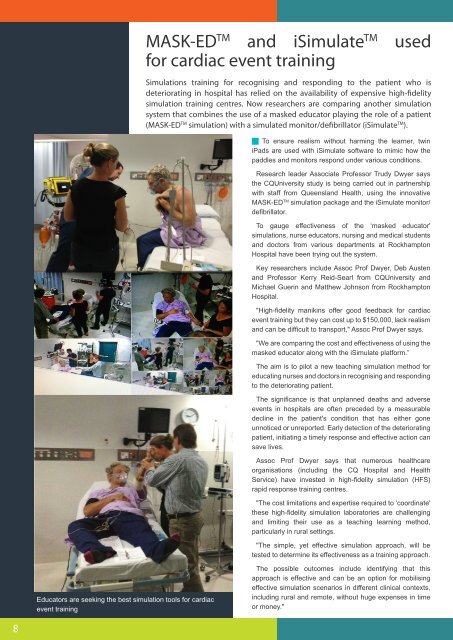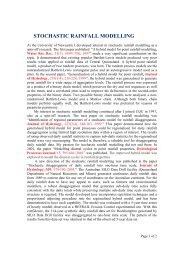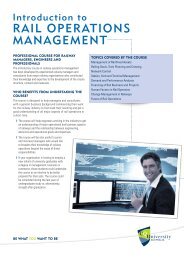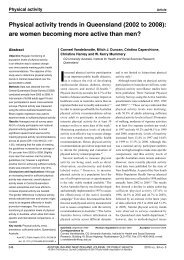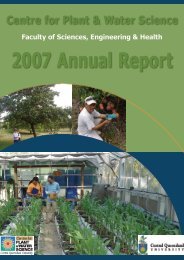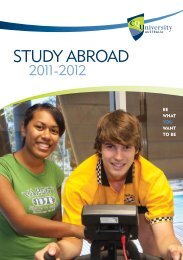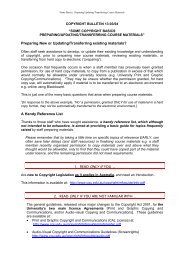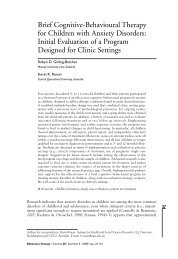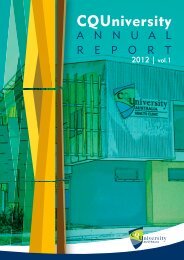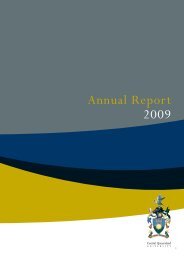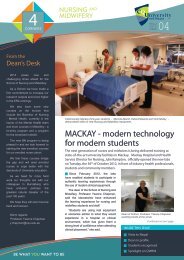4 Corners Newsletter - Vol 5 - Central Queensland University
4 Corners Newsletter - Vol 5 - Central Queensland University
4 Corners Newsletter - Vol 5 - Central Queensland University
Create successful ePaper yourself
Turn your PDF publications into a flip-book with our unique Google optimized e-Paper software.
MASK-ED TM and iSimulate TM used<br />
for cardiac event training<br />
Simulations training for recognising and responding to the patient who is<br />
deteriorating in hospital has relied on the availability of expensive high-fidelity<br />
simulation training centres. Now researchers are comparing another simulation<br />
system that combines the use of a masked educator playing the role of a patient<br />
(MASK-ED TM simulation) with a simulated monitor/defibrillator (iSimulate TM ).<br />
To ensure realism without harming the learner, twin<br />
iPads are used with iSimulate software to mimic how the<br />
paddles and monitors respond under various conditions.<br />
Research leader Associate Professor Trudy Dwyer says<br />
the CQ<strong>University</strong> study is being carried out in partnership<br />
with staff from <strong>Queensland</strong> Health, using the innovative<br />
MASK-ED TM simulation package and the iSimulate monitor/<br />
defibrillator.<br />
To gauge effectiveness of the ‘masked educator'<br />
simulations, nurse educators, nursing and medical students<br />
and doctors from various departments at Rockhampton<br />
Hospital have been trying out the system.<br />
Key researchers include Assoc Prof Dwyer, Deb Austen<br />
and Professor Kerry Reid-Searl from CQ<strong>University</strong> and<br />
Michael Guerin and Matthew Johnson from Rockhampton<br />
Hospital.<br />
"High-fidelity manikins offer good feedback for cardiac<br />
event training but they can cost up to $150,000, lack realism<br />
and can be difficult to transport," Assoc Prof Dwyer says.<br />
"We are comparing the cost and effectiveness of using the<br />
masked educator along with the iSimulate platform.”<br />
The aim is to pilot a new teaching simulation method for<br />
educating nurses and doctors in recognising and responding<br />
to the deteriorating patient.<br />
The significance is that unplanned deaths and adverse<br />
events in hospitals are often preceded by a measurable<br />
decline in the patient's condition that has either gone<br />
unnoticed or unreported. Early detection of the deteriorating<br />
patient, initiating a timely response and effective action can<br />
save lives.<br />
Assoc Prof Dwyer says that numerous healthcare<br />
organisations (including the CQ Hospital and Health<br />
Service) have invested in high-fidelity simulation (HFS)<br />
rapid response training centres.<br />
"The cost limitations and expertise required to ‘coordinate'<br />
these high-fidelity simulation laboratories are challenging<br />
and limiting their use as a teaching learning method,<br />
particularly in rural settings.<br />
"The simple, yet effective simulation approach, will be<br />
tested to determine its effectiveness as a training approach.<br />
Educators are seeking the best simulation tools for cardiac<br />
event training<br />
The possible outcomes include identifying that this<br />
approach is effective and can be an option for mobilising<br />
effective simulation scenarios in different clinical contexts,<br />
including rural and remote, without huge expenses in time<br />
or money."<br />
8


